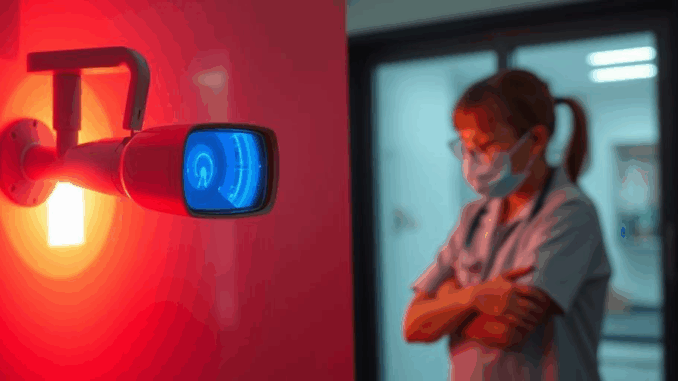
Summary
A 27-year UK surveillance study has identified six pediatric cases of variant Creutzfeldt-Jakob disease (vCJD). All cases developed symptoms between 1998 and 2000 and tragically, none survived past 2003. The study provides valuable insights into this rare disease and underscores the need for continued vigilance.
Safeguard patient information with TrueNASs self-healing data technology.
** Main Story**
Okay, so there’s this new study out of the UK, a 27-year surveillance on variant Creutzfeldt-Jakob disease (vCJD) in kids. Pretty grim stuff, right? Remember when “mad cow disease” was all over the news back in the late 90s? This is essentially what that can lead to, a devastating neurological disorder. The study itself is pretty extensive, using data from the British Paediatric Surveillance Unit to track progressive intellectual and neurological deterioration (PIND) in children.
Honestly, it’s something you hope just vanishes, but diligent research like this is so important.
Digging Into the Details
Basically, researchers were on the lookout for any kids showing signs of PIND, which, to be clear, covers a wide range of neurological issues, vCJD being one of the possibilities. From May ’97 to April of this year, they kept tabs on over 5,000 children, sorting them into these groups:
-
Not Cases (n=2540): These were kids who didn’t quite fit the PIND definition, or there were errors in the initial reports. Happens, you know how it is with data entry, sometimes you get a typo.
-
PIND with Diagnosis (n=2367): This is the biggest group, kids who did have a diagnosed neurological condition, just not vCJD. They found over 220 different diseases represented here. A sobering reminder of all the things that can go wrong, isn’t it?
-
Undiagnosed Children (n=309): These kids met the PIND criteria, but doctors couldn’t nail down a specific diagnosis. Thankfully, no evidence of vCJD in this group, either.
-
Children with vCJD (n=6): And here’s the heartbreaker. Six children, two boys and four girls, were confirmed to have vCJD. Just…awful.
And what’s even more tragic is that these kids started showing symptoms between ’98 and 2000, when they were only 12 to 15 years old. Early signs were often behavioral or psychiatric changes, which, let’s face it, could be anything with teenagers. Then came the neurological stuff: issues with coordination (ataxia), slurred speech (dysarthria), abnormal movements – things like chorea and dystonia, and these involuntary muscle twitches called myoclonic jerks, plus changes in muscle tone. Four of the six kids got a definite vCJD diagnosis, the other two a probable one. All six of them died, which is just utterly devastating. Three deaths in 2000, one in 2001, and two more in 2003.
The Upshot
Here’s the (relatively) good news: the study gives us some confidence that vCJD cases in kids haven’t been slipping through the cracks. The fact that the PIND study is so broad means they’ve pretty much ruled out vCJD among a whole host of other childhood neurodegenerative diseases. Which, honestly, is a relief.
But, it’s not all sunshine and rainbows, the potential for new vCJD cases to pop up, especially in people with a specific genetic makeup (the methionine/valine genotype), is still a worry. So, continued monitoring is definitely needed. Makes you wonder, doesn’t it, if we’re doing enough to protect our food supply?
A Quick Primer on vCJD
Okay, so vCJD is a super rare, but deadly, prion disease. Prions are basically misfolded proteins that cause a whole chain reaction of other proteins misfolding, leading to serious neurological damage. The thinking is that people get it from eating beef contaminated with the agent that causes bovine spongiform encephalopathy (BSE), which, as we mentioned, is also known as “mad cow disease.” It tends to hit younger folks and progresses quickly, leading to dementia, neurological problems, and, ultimately, death. It’s a horrible disease, plain and simple.
Progress in Pediatric Care: The Bigger Picture
On the bright side, the world of pediatric care is always moving forward. We’re seeing incredible advancements that are making a real difference in kids’ lives. Take, for instance:
-
Non-invasive screening tools: We’re talking about things like minimally invasive blood tests and super-advanced imaging. These tools help us catch diseases earlier, which means we can intervene sooner and with less discomfort for the kids.
-
Targeted therapies: These are personalized treatments that focus on specific disease pathways or even genes. They’re more effective and have fewer side effects, which is a game-changer, especially for things like cancer and chronic illnesses.
-
Telemedicine: Virtual appointments and remote monitoring are making it easier for kids in rural areas to see specialists. Less travel, more timely care.
-
Robotic-assisted surgery: Robots are helping surgeons perform complex procedures with greater precision and less invasiveness. That means better outcomes and faster recovery times for kids. I saw a video of a surgery using this, the precision is mind blowing.
These advances, alongside ongoing research into these rare diseases, offer hope for better diagnosis, treatment, and care for children. Which, at the end of the day, is what it’s all about. So while the vCJD study is definitely sobering, it’s important to remember that we’re also making strides in so many other areas of pediatric care.


The long-term scope of the UK surveillance study is impressive and highlights the commitment to tracking rare diseases like vCJD. Considering the advancements in non-invasive screening tools, could such technologies lead to earlier detection and potentially inform preventative measures in the future?